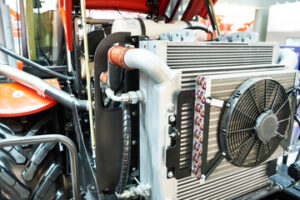Keeping your home cool all summer long requires a reliable AC solution. If your current system uses hydrofluorocarbons (HFCs) like Freon, it’s time to upgrade to a new, more environmentally friendly model. HFCs deplete protective ozone in the atmosphere. Fortunately, modern residential HVAC options can work well in older homes and 30+ story high rises that restrict access to exterior walls.
 Upgrading to a new air conditioner is not only an excellent way to improve your home’s cooling performance, but it’s also an effective method for cutting down on energy costs. Older AC units consume significantly more electricity to provide the same level of cooling. Upgrading to a newer model that has an ENERGY STAR rating can help you save money throughout the year. If you don’t know what to do, click here at https://alltemprefrigerationfl.com/.
Upgrading to a new air conditioner is not only an excellent way to improve your home’s cooling performance, but it’s also an effective method for cutting down on energy costs. Older AC units consume significantly more electricity to provide the same level of cooling. Upgrading to a newer model that has an ENERGY STAR rating can help you save money throughout the year. If you don’t know what to do, click here at https://alltemprefrigerationfl.com/.
In addition to the monetary savings, newer air conditioning systems are more environmentally friendly than older models. This is because they use fewer natural resources and emit fewer harmful gases into the atmosphere. Additionally, many of the refrigerants used in newer models have a lower impact on the ozone layer and global warming potential. By choosing an ENERGY STAR-certified air conditioner, you can support environmental stewardship and protect the planet for future generations.
Depending on your home’s energy needs and cooling requirements, you can choose from a wide range of ENERGY STAR-certified options. Some types of energy-efficient air conditioners include portable air conditioners, ductless mini-split systems, and central air conditioning systems. If you are unsure of which type of system is right for your home, consult an experienced HVAC company.
While an energy-efficient air conditioner may cost more upfront than a standard model, you can expect to recover the initial investment several times over its lifespan. In addition, some utility companies offer rebates for upgrading to a more energy-efficient model.
Upgrading to an energy-efficient air conditioning system is also a great way to increase your property’s appraisal value. This is because potential buyers will know that the newer system is more environmentally sustainable and will have a low operating cost.
To make the most of your new air conditioning system, it is important to follow proper maintenance and cleaning practices. By keeping your air filters clean, replacing them regularly, and scheduling an annual air conditioning tune-up, you can extend the lifespan of your new unit and maximize its energy efficiency. Additionally, a programmable thermostat can help you save even more by automatically adjusting your home’s temperature during off-peak energy hours and lowering it during peak usage.
Installing A Central Air Conditioner
A central AC system is the ultimate home air conditioning solution. It costs more than a room AC or an evaporative cooler, but it cools your entire home through the strategic placement of vents. It also eliminates the problems that come with window units—namely, the risk of letting rain and moisture into your home which can lead to mold and rot issues.
Central air conditioning systems are also a better choice than box fans for cooling your whole house because they use refrigerant and are more energy efficient. However, it’s important to keep in mind that installing a new AC unit can be a significant investment—which is why you should consider a few factors before making this decision.
Before a technician can install your new AC unit, they’ll need to do a preinstallation evaluation of your home. This is referred to as a Manual J load calculation, and it involves measuring your home’s insulation efficiency and determining whether your existing ductwork can be used to distribute the cool air. This is an essential step in ensuring your new AC unit will be properly sized for optimal performance, and it typically adds $250 to the overall cost of the installation.
A central air conditioner will also need to have its electrical circuit rewired for proper operation. This is another factor that can add up to a considerable price increase, and it typically requires hiring a professional electrician to install a standard 240-volt outlet and upgrade your breaker.
It’s important to note that a new AC unit will require routine cleaning and inspection to ensure peak performance. This is an additional cost that should be reflected in the final price of the installation, and it’s usually worth considering for your long-term comfort and peace of mind.
In addition to cleaning and inspecting your new AC system, it’s a good idea to look into a service plan that will help you maintain the system throughout the year. These plans typically include annual maintenance, discounted rates on repairs, and a labor warranty. They can be quite affordable, but they’re an investment that can save you money on your energy bills over the long term.
Installing A Ductless Mini Split System
Homeowners who are looking to replace their central air conditioning system should consider going with a ductless mini-split. This type of cooling system combines an outdoor unit with small wall-mounted units inside the rooms that homeowners want to heat and cool. The units are connected through a conduit that houses refrigerant tubing, suction tubing, and electrical wiring. The only home improvement needed is a hole in the wall for the conduit.
Ductless mini splits come in both single-zone and multi-zone models. Depending on the number of indoor air-handling units and the number of zones that will be installed, a ductless system can cost as little as $500 to install. However, homeowners must get a professional to determine the correct number of indoor units and zones that will be installed.
While a DIYer might be tempted to try a ductless mini-split installation on their own, the process is complicated and requires specialized tools. Attempting to save money by installing the unit on their own might result in air leaks, improper connections, and other expensive repairs. HVAC technicians have the training, tools, and experience to ensure that a ductless mini-split will be installed correctly.
In addition to ensuring that a ductless system will be installed properly, an expert can also advise homeowners about upgrades and other options for their new system. For example, a homeowner might want to add a wireless remote controller that will allow them to control their home’s temperature from anywhere. They might also need to install a condensate drain pump or condenser stand, especially if their home is located in an area that gets a lot of snow.
As with any home upgrade, adding a ductless mini-split system to a property can increase the value of the home. Prospective home buyers will be more interested in a property that offers the latest in heating and cooling technology. Furthermore, any system that reduces energy usage will have a positive impact on the home’s carbon footprint. A ductless system that uses an inverter compressor can help to further reduce the property’s energy consumption.
Installing A Humidifier Or Dehumidifier
The right humidity level in your home is critical to comfort and safety. If you have too much moisture in the air, mold and mildew may develop, leading to health problems and damage to your furniture and woodwork. High humidity also makes it difficult to keep your temperature-controlled system running at the ideal level, wasting energy.
To maintain a comfortable humidity level year-round, consider a whole-home humidifier or dehumidifier installation service from your local HVAC pro. Both devices work to automatically balance moisture levels throughout your home. They are controlled by a device known as a humidistat, which is mounted next to your thermostat and constantly measures the relative humidity level in your abode. This information is then used to control your humidifier or dehumidifier.
A humidifier increases the moisture content of the air, making it feel warmer and more comfortable in your home. During cooler months, it can help you save money on your energy bills by allowing you to lower the temperature setting without feeling uncomfortable.
Adding a dehumidifier to your home removes excess moisture from the air, which can make it feel colder in your house during cool weather. It can also improve your indoor air quality by reducing the growth of mold, mildew, and other allergens. This can provide relief to people who suffer from chronic allergies, such as asthma, by lowering the number of household allergens.
Whole-house dehumidifiers can be installed in one of two ways: they can be added to your existing return duct or they can be installed as a dedicated return-to-supply unit. The former is less costly, but it requires the air conditioner to run to help move the dehumidified air back into the supply duct. The latter installation method is more expensive, but it offers better efficiency and saves on energy costs.
When a dehumidifier is installed as a dedicated return-to-supply, it does not require the use of your air handler fan to help move the dehumidified moisture into the supply duct. This is a more efficient way to install the unit, saving you energy costs while helping to extend the life of your HVAC system.
